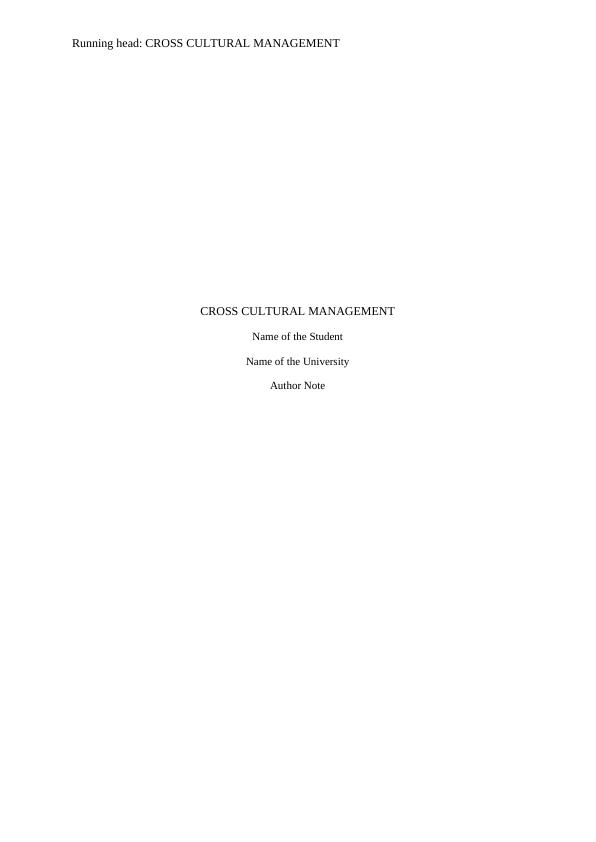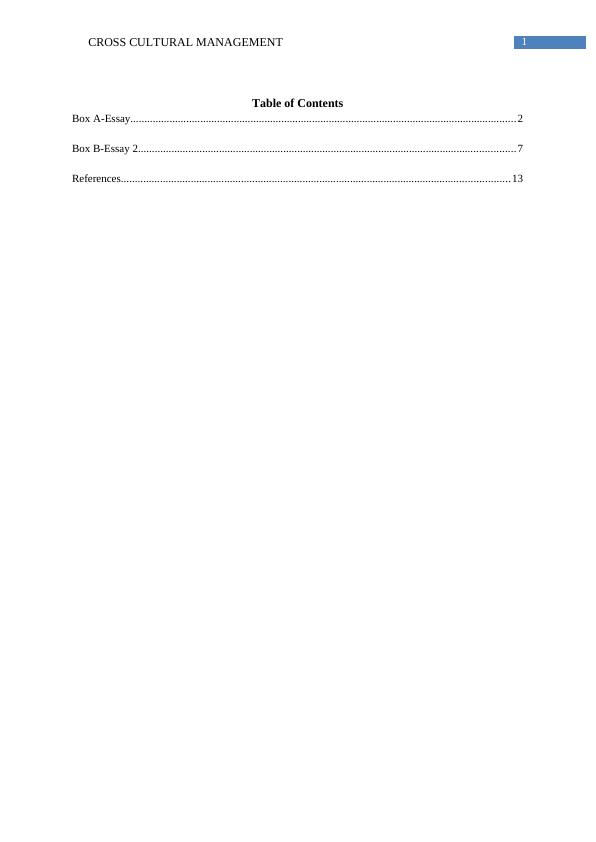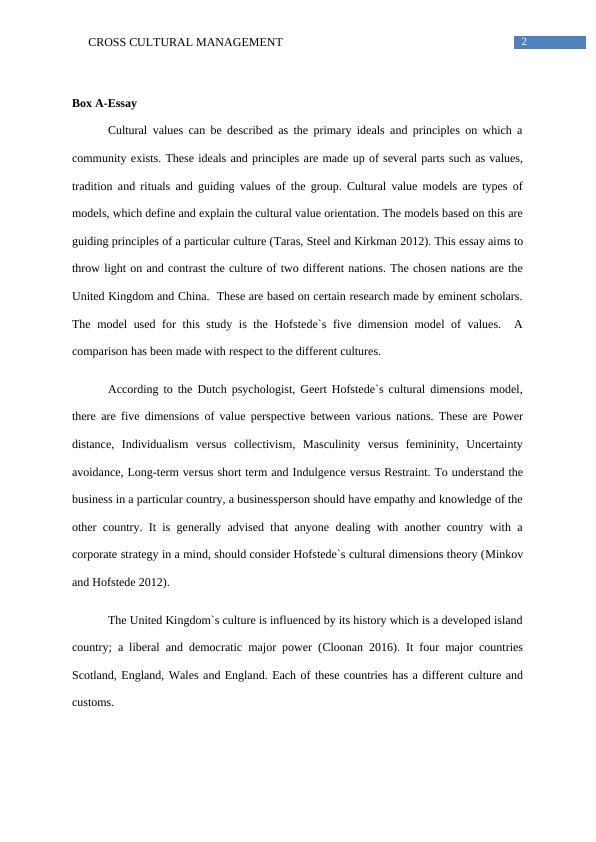BUS020X652S Cross-Cultural Management
Added on 2020-04-15
18 Pages4608 Words39 Views
End of preview
Want to access all the pages? Upload your documents or become a member.
Understanding Business Culture: Hofstede Model and Challenges Faced by Tesco
|18
|4223
|69
Managing Cross Cultures: An Examination of Hofstede's Model of Cultural Dimensions
|10
|2369
|401
Managing Across Borders: Cultural Profile and Hofstede's Cultural Dimensions
|11
|1757
|417
Business Across Culture: Critical Assessment of Hofstede Model and Impact of Cultural Diversity on Cross Border Business
|21
|5601
|189
Hofstede Model, Types of Economic Systems and Its Effect on Society : Project
|6
|1045
|32
International Management Assignment - Aditya Birla group
|13
|4389
|460




